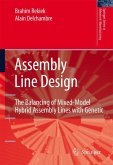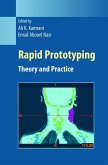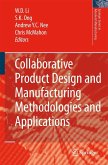This edited collection of essays from world-leading academic and industrial authors yields insight into all aspects of reverse engineering. Methods of reverse engineering analysis are covered, along with special emphasis on the investigation of surface and internal structures. Frequently-used hardware and software are assessed and advice given on the most suitable choice of system.
Also covered is rapid prototyping and its relationship with successful reverse engineering.
Congratulations and thank you for reading this book! You hold in your hand perhaps the first book solely written on mechanical reverse engineering from an industry perspective. The motivation for this book originates from the needs of today's global industry. We recall an incident during one of our industrial trips to a local manufact- ing company. The office secretary was photocopying documents for this me- ing, when the manufacturing manager remarked, "Wouldn't it be nice if I could do the same with mechanical parts, it would save me and my team a lot of time and money. " "Have you not heard of reverse engineering?" we asked him. "- verse engineering, isn't that something to do with programming computers?" "No," we replied. "Reverse engineering (RE) refers to creating a computer-aided design (CAD) model from an existing physical object, which can be used as a design tool for producing a copy of an object, extracting the design concept of an existing model, or reengineering an existing part. " His eyes lit up. Such sit- tions are not uncommon in today's manufacturing arena. With globalization and trade liberalization, manufacturing companies face increasing competition from goods and services produced in lower wage eco- mies. Countries in the West cannot compete against low wages and must the- fore depend on raising innovation and best practices to create better products.
Also covered is rapid prototyping and its relationship with successful reverse engineering.
Congratulations and thank you for reading this book! You hold in your hand perhaps the first book solely written on mechanical reverse engineering from an industry perspective. The motivation for this book originates from the needs of today's global industry. We recall an incident during one of our industrial trips to a local manufact- ing company. The office secretary was photocopying documents for this me- ing, when the manufacturing manager remarked, "Wouldn't it be nice if I could do the same with mechanical parts, it would save me and my team a lot of time and money. " "Have you not heard of reverse engineering?" we asked him. "- verse engineering, isn't that something to do with programming computers?" "No," we replied. "Reverse engineering (RE) refers to creating a computer-aided design (CAD) model from an existing physical object, which can be used as a design tool for producing a copy of an object, extracting the design concept of an existing model, or reengineering an existing part. " His eyes lit up. Such sit- tions are not uncommon in today's manufacturing arena. With globalization and trade liberalization, manufacturing companies face increasing competition from goods and services produced in lower wage eco- mies. Countries in the West cannot compete against low wages and must the- fore depend on raising innovation and best practices to create better products.








